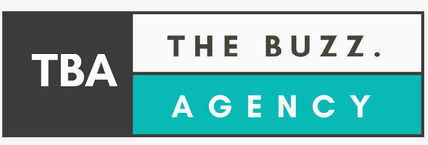Most of us understand the appeal of social media as a way to connect with people.
But for real estate agents, it can also be an extremely effective marketing tool — especially when marketing to millennials. Born between the years of 1981 and 1996, millennials are projected to overtake baby boomers as America’s largest generation. They’re slated to be the next drivers of economic force and likely comprise a large portion of the consumers who are now spending, on average, over five hours per day on their smartphones.
As video increases in popularity and the homebuying demographic shifts to the next generation, your marketing strategy should adapt accordingly. Therefore, one of the best ways to connect with these clients is through social media tools built specifically for video.
Now, let’s take a closer look at Facebook Live, Snapchat and Instagram Stories to learn how you can use them to reach your audience and create an appealing, reachable brand. The basic idea for all of these is fairly simple: By using these social media tools, you can capture and share experiences with your friends and followers through short, live videos. Or they can be stylised with messaging and shared once published. They are easy to create and are delivered directly to your followers’ feeds.
As a real estate service in our own right, Agentology has experienced success with utilising these tools for our marketing initiatives. While we have yet to take advantage of Snapchat’s younger user base, Instagram and Facebook Live have proved fruitful in driving engagement among our millennial clients. We’ve used Facebook Live for product updates and company news. Instagram Stories, alternatively, has been used for more marketing-based initiatives, such as promoting new articles, sponsoring ads or demonstrating our company culture.
There are differences in what these three tools have to offer, and being effective with them requires some knowledge of their specifics.
This is basically your own personalised video network. There’s no doubt about the effectiveness of live video, and FB Live also makes it easy to take advantage of this technology. With your smartphone, you can film yourself and stream it live to your Facebook friends and followers (for a maximum of four hours). Essentially, they are seeing what you’re seeing in real time. It’s a great format for walking through a house or neighborhood, all the while providing narration and color to what your viewers are seeing.
Facebook has 2.23 billion active users, and nearly 2 billion people have watched Facebook Live broadcasts. More pertinent to a real estate-based audience, 79% of adults in the U.S. use Facebook. It’s hard to find a free platform that can provide this kind of reach. Your followers are notified every time you go live, giving you opportunities for more engagement. Lastly, you can purchase advertising on Facebook to drive people to your live videos. When promoted like an event, it will generate interest and engagement, even for people who can’t join it live (after the live broadcast is done, the video is yours to keep on your Facebook page).
For clients who either don’t want to invest the time upfront or who are unable to get to a house for a tour, this is an excellent opportunity to bring the house to them.
Instagram Stories
Instagram is owned by Facebook, and with 1 billion monthly active users, it’s already one of the most popular social media channels, especially among millennials. And while you might see a lot of similarities between Facebook Live and Instagram Stories, the main differences are about the delivery of the video and the audience.
Instagram Stories alone has more than 400 million active users. These videos are short (a maximum of 15 seconds), and they are available to your followers for 24 hours after being posted before disappearing. These are not live videos; rather, once you shoot a video, you can publish it as is, or you can add words, URLs and graphics within the video to highlight specific points you want to make. Instagram Story Highlights allows you to take an existing video (or multiple videos compiled together) and pin it to your Instagram profile, creating a customised, branded video ad for all your followers to see every time they visit your profile.
Because these are short videos, you can highlight the specific features of a house. You might want focus on an amazing fireplace, complete with a roaring fire. You can overlay the video with text that says something along the lines of, “Your new home could be the antidote to those cold nights!” You can even produce multiple videos of the same house, just with different shots, different features and different messages.
Snapchat
Snapchat is very similar to Instagram Stories, and the stats on Snapchat usage are staggering. On average, the 100 million-plus active users spend a total of 25-30 minutes every day perusing videos (otherwise known as “snaps”).
In 2017, users between the ages of 18 and 34 were projected (paywall) to comprise 60% of Snapchat’s total user base — an age range falling comfortably within the millennial bracket. Snapchat has only ever been about video (though not live video), so users are very accustomed to this format. They expect entertaining, fun videos. You can provide this with great one-off shots of things like home features, great landscaping or even videos of yourself.
These videos are short, at only 10 seconds (you can piece together multiple videos to make a longer piece that is viewed as a series of video “chunks”), which provides more of an opportunity for highly visual elements. However, remember that there is an active crowd for this kind of content: Users watch 10 billion videos per day.
We can best connect with clients when we have an interesting story to tell. With video, real estate agents have the opportunity to deliver short, interesting stories about the homes available to potential buyers. And because these kinds of stories need to be vivid and colorful, social media video is the perfect platform to connect and engage.
From: Forbes





